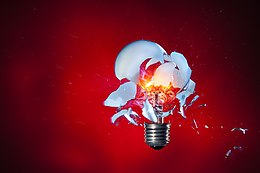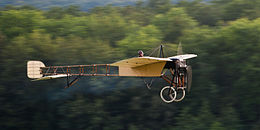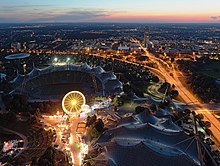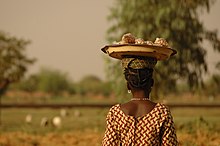Thursday, June 25, 2015
Thursday, June 11, 2015
Friday, June 5, 2015
Portrait Photography
Portrait photography or portraiture is photography of a person or group of people that displays the expression, personality, and mood of the subject. Like other types of portraiture, the focus of the photograph is usually the person's face, although the entire body and the background or context may be included.

Winter portrait of a 10-month-oldbaby girl

Butterfly lighting by director Josef von Sternberg is used to enhanceMarlene Dietrich's features, in the iconic shot.
From Shanghai Express, Paramount 1932
Photo by Don English
History
The relatively low cost of the daguerreotype in the middle of the 19th century and the reduced sitting time for the subject, though still much longer than now, led to a general rise in the popularity of portrait photography over painted portraiture. The style of these early works reflected the technical challenges associated with long exposure times and the painterly aesthetic of the time. Subjects were generally seated against plain backgrounds and lit with the soft light of an overhead window and whatever else could be reflected with mirrors. Advances in photographic equipment and techniques developed, and gave photographers the ability to capture images with shorter exposure times and the making of portraits outside the studio.
Lighting for portraiture

When portrait photographs are composed and captured in a studio, the photographer has control over the lighting of the composition of the subject and can adjust direction and intensity of light. There are many ways to light a subject's face, but there are several common lighting plans which are easy enough to describe.
Three-point lighting
One of the most basic lighting plans is called three-point lighting. This plan uses three (and sometimes four) lights to fully model (bring out details and the three-dimensionality of) the subject's features. The three main lights used in this light plan are as follows:
Key-Light
Also called a main light, the key light is usually placed to one side of the subject's face, between 30 and 60 degrees off center and a bit higher than eye level. The purpose of the Key-Light is to give shape (modelling) to a subject, typically a face. This relies on the first principle of lighting, white comes out of a plane and black goes back into a plane. The depth of shadow created by the Main-Light can be controlled with a Fill-Light.
Fill-in light
In modern photography, the fill-in light is used to control the contrast in the scene and is nearly always placed above the lens axis and is a large light source (think of the sky behind your head when taking a photograph). As the amount of light is less than the key-light (main-light), the fill acts by lifting the shadows only (particularly relevant in digital photography where the noise lives in the shadows). It is true to say that light bounces around a room and fills in the shadows but this does not mean that a fill-light should be placed opposite a key-light (main-light) and it does not soften shadows, it lifts them. The relative intensity (ratio) of the Key-light to the fill-light is most easily discussed in terms of "Stops" difference (where a Stop is a doubling or halving of the intensity of light). A 2 Stop reduction in intensity for the Fill-Light would be a typical start point to maintain dimensionality (modelling) in a portrait (head and shoulder) shot.
Accent-Light
Accent-lights serve the purpose of accentuating a subject. Typically an Accent-light will separate a subject from a background. Examples would be a light shining onto a subject's hair to add a rim effect or shining onto a background to lift the tones of a background. There can be many accent lights in a shot, another example would be a spotlight on a handbag in a fashion shot. When used for separation, i.e. a hair-light, the light should not be more dominant than the main light for general use. Think in terms of a "Kiss of moonlight", rather than a "Strike of lightning", although there are no "shoulds" in photography and it is up to the photographer to decide on the authorship of their shot.
Kicker
A Kicker is a form of Accent-Light. Often used to give a backlit edge to a subject on the shadow side of the subject.
Butterfly lighting

From Shanghai Express, Paramount 1932
Photo by Don English
Butterfly lighting uses only two lights. The Key light is placed directly in front of the subject, often above the camera or slightly to one side, and a bit higher than is common for a three-point lighting plan. The second light is a rim light. Often a reflector is placed below the subject's face to provide fill light and soften shadows.
This lighting can be recognized by the strong light falling on the forehead, the bridge of the nose and the upper cheeks, and by the distinct shadow below the nose which often looks rather like a butterfly and thus provides the name for this lighting plan. Butterfly lighting was a favourite of famed Hollywood portraitist George Hurrell, which is why this style of lighting is often called Paramount lighting.
Accessory lights
These lights can be added to basic lighting plans to provide additional highlights or add background definition.
Background lights
Not so much a part of the portrait lighting plan, but rather designed to provide illumination for the background behind the subject, background lights can pick out details in the background, provide a halo effect by illuminating a portion of a backdrop behind the subject's head, or turn the background pure white by filling it with light.
Other lighting equipment
Most lights used in modern photography are a flash of some sort. The lighting for portraiture is typically diffused by bouncing it from the inside of anumbrella, or by using a soft box. A soft box is a fabric box, encasing a photo strobe head, one side of which is made of translucent fabric. This provides a softer lighting for portrait work and is often considered more appealing than the harsh light often cast by open strobes. Hair and background lights are usually not diffused. It is more important to control light spillage to other areas of the subject. Snoots, barn doors and flags or gobos help focus the lights exactly where the photographer wants them. Background lights are sometimes used with color gels placed in front of the light to create coloured backgrounds.
Wednesday, June 3, 2015
Science of photography
Science of photography
The science of photography refers to the use of science, such as chemistry and physics, in all aspects of photography. This applies to the camera, its lenses, physical operation of the camera, electronic camera internals, and the process of developing film in order to take and develop pictures properly.
Law of Reciprocity
- Exposure ∝ Aperture Area × Exposure Time × Scene Luminance
The law of reciprocity describes how light intensity and duration trade off to make an exposure—it defines the relationship between shutter speed and aperture, for a given total exposure. Changes to any of these elements are often measured in units known as "stops"; a stop is equal to a factor of two.
Halving the amount light exposing the film can be achieved either by:
- Closing the aperture by one stop
- Decreasing the shutter time (increasing the shutter speed) by one stop
- Cutting the scene lighting by half
Likewise, doubling the amount of light exposing the film can be achieved by the opposite of one of these operations.
The luminance of the scene, as measured on a reflected light meter, also affects the exposure proportionately. The amount of light required for proper exposure depends on the film speed; which can be varied in stops or fractions of stops. With either of these changes, the aperture or shutter speed can be adjusted by an equal number of stops to get to a suitable exposure.
Light is most easily controlled through the use of the camera's aperture (measure in f-stops), but it can also be regulated by adjusting the shutter speed. Using faster or slower film is not usually something that can be done quickly, at least using roll film. Large format cameras use individual sheets of film and each sheet could be a different speed. Also, if you're using a larger format camera with a polaroid back, you can switch between backs containing different speed polaroids. Digital cameras can easily adjust the film speed they are simulating by adjusting theexposure index, and many digital cameras can do so automatically in response to exposure measurements.
For example, starting with an exposure of 1/60 at f/16, the depth-of-field could be made shallower by opening up the aperture to f/4, an increase in exposure of 4 stops. To compensate, the shutter speed would need to be increased as well by 4 stops, that is, adjust exposure time down to 1/1000. Closing down the aperture limits the resolution due to the diffraction limit.
The reciprocity law specifies the total exposure, but the response of a photographic material to a constant total exposure may not remain constant for very long exposures in very faint light, such as photographing a starry sky, or very short exposures in very bright light, such as photographing the sun. This is known as reciprocity failure of the material (film, paper, or sensor).
Lenses
A photographic lens is usually composed of several lens elements, which combine to reduce the effects of chromatic aberration, coma, spherical aberration, and other aberrations. A simple example is the three-element Cooke triplet, still in use over a century after it was first designed, but many current photographic lenses are much more complex.
Using a smaller aperture can reduce most, but not all aberrations. They can also be reduced dramatically by using an aspheric element, but these are more complex to grind than spherical or cylindrical lenses. However, with modern manufacturing techniques the extra cost of manufacturing aspherical lenses is decreasing, and small aspherical lenses can now be made by molding, allowing their use in inexpensive consumer cameras. Fresnel lenses are not used in cameras even though they are extremely light and cheap, because they produce poor image quality. The recently developed Fiber-coupled monocentric lens consists of spheres constructed of concentric hemispherical shells of different glasses tied to the focal plane by bundles of optical fibers. Monocentric lenses are also not used in cameras because the technology was just debuted in October 2013 at the Frontiers in Optics Conference in Orlando, Florida.
All lens design is a compromise between numerous factors, not excluding cost. Zoom lenses (i.e. lenses of variable focal length) involve additional compromises and therefore normally do not match the performance of prime lenses.
When a camera lens is focused to project an object some distance away onto the film or detector, the objects that are closer in distance, relative to the distant object, are also approximatelyin focus. The range of distances that are nearly in focus is called the depth of field. Depth of field generally increases with decreasing aperture diameter (increasing f-number). The unfocused blur outside the depth of field is sometimes used for artistic effect in photography. The subjective appearance of this blur is known as bokeh.
If the camera lens is focused at or beyond its hyperfocal distance, then the depth of field becomes large, covering everything from half the hyperfocal distance to infinity. This effect is used to make "focus free" or fixed-focus cameras.
Motion blur
Motion blur is caused when either the camera or the subject moves during the exposure. This causes a distinctive streaky appearance to the moving object or the entire picture (in the case of camera shake).
Motion blur can be used artistically to create the feeling of speed or motion, as with running water. An example of this is the technique of "panning", where the camera is moved so it follows the subject, which is usually fast moving, such as a car. Done correctly, this will give an image of a clear subject, but the background will have motion blur, giving the feeling of movement. This is one of the more difficult photographic techniques to master, as the movement must be smooth, and at the correct speed. A subject that gets closer or further away from the camera may further cause focusing difficulties.
Light trails is another photographic effect where motion blur is used. Photographs of the lines of light visible in long exposure photos of roads at night are one example of effect. This is caused by the cars moving along the road during the exposure. The same principle is used to create star trail photographs.
Generally, motion blur is something that is to be avoided, and this can be done in several different ways. The simplest way is to limit the shutter time so that there is very little movement of the image during the time the shutter is open. At longer focal lengths, the same movement of the camera body will cause more motion of the image, so a shorter shutter time is needed. A commonly cited rule of thumb is that the shutter speed in seconds should be about the reciprocal of the 35 mm equivalent focal length of the lens in millimeters. For example, a 50 mm lens should be used at a minimum speed of 1/50 sec, and a 300 mm lens at 1/300 of a second. This can cause difficulties when used in low light scenarios, since exposure also decreases with shutter time.

Motion blur due to subject movement can usually be prevented by using a faster shutter speed. The exact shutter speed will depend on the speed at which the subject is moving. For example, a very fast shutter speed will be needed to "freeze" the rotors of a helicopter, whereas a slower shutter speed will be sufficient to freeze a runner.
A tripod may be used to avoid motion blur due to camera shake. This will stabilize the camera during the exposure. A tripod is recommended for exposure times more than about 1/15 seconds. There are additional techniques which, in conjunction with use of a tripod, ensure that the camera remains very still. These may employ use of a remote actuator, such as a cable release or infrared remote switch to activate the shutter, so as to avoid the movement normally caused when the shutter release button is pressed directly. The use of a "self timer" (a timed release mechanism that automatically trips the shutter release after an interval of time) can serve the same purpose. Most modern single-lens reflex camera (SLR) have a mirror lock-up feature that eliminates the small amount of shake produced by the mirror flipping up.
Focus
Focus is the tendency for light rays to reach the same place on the image sensor or film, independent of where they pass through the lens. For clear pictures, the focus is adjusted for distance, because at a different object distance the rays reach different parts of the lens with different angles. In modern photography, focusing is often accomplished automatically.
The autofocus system in modern SLRs use a sensor in the mirrorbox to measure contrast. The sensor's signal is analyzed by an application-specific integrated circuit (ASIC), and the ASIC tries to maximize the contrast pattern by moving lens elements. The ASICs in modern cameras also have special algorithms for predicting motion, and other advanced features.
Tuesday, June 2, 2015
Technique to Sport Photography
Technique
Location is often important for sports photography. At big events, professional photographers often shoot from VIP spots with the best views, usually as close to the action as possible. Most sports require the photographer to frame their images with speed and adjust camera settings spontaneously to prevent blurring or incorrect exposure. Some sports photography is also done from a distance to give the game a unique effect.
Shutter speed is critical to catching motion, thus sports photography is often done in shutter priority mode or manual. A frequent goal is to capture an instant with minimal blur, in which case a minimal shutter speed is desired, but in other cases a slower shutter speed is used so that blur is show, letting one see the motion, not simply the instant. A particular technique is panning, where the camera uses an intermediate shutter speed and pans with the subject, yielding a relatively sharp subject (particularly for faster subjects) and a background blurred in the direction of motion, yielding a sense of speed – compare speed lines.
ISO speed is often high (to allow faster shutter speeds) and may be left in auto.
Photos are often taken in burst mode to capture the best moment, sometimes in combination with JPEG rather than RAW shooting (JPEG files being smaller, these allow longer bursts).
Subscribe to:
Comments (Atom)



